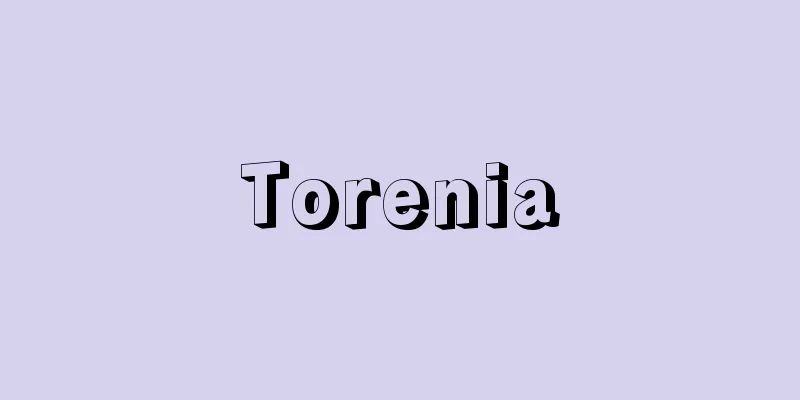Tremor

|
This is what is commonly referred to as "trembling," and refers to involuntary, rhythmic, small, repeated vibrations that maintain a regular rhythm. It is also written as tremor. It is different from non-rhythmic involuntary movements such as muscle clonus, which causes sudden muscle contraction due to stretching stimuli, and chorea, which causes irregular movements due to disorders of the extrapyramidal pathway. Physiological tremors are commonly seen in healthy people, but pathological tremors are classified into resting tremor, action tremor, postural tremor, etc., depending on how the vibrations appear. Resting tremor is a slow tremor that appears when muscles are at rest, and is often seen in Parkinson's disease. In severe cases, it appears as a characteristic pill-rolling movement (tremor) in the fingers. It can also appear during sleep. Action tremor is also called kinetic tremor, and is characterized by appearing only when you try to move voluntarily, and often disappears when you are at rest or asleep. However, it can also be seen with body movements during sleep, such as turning over in bed. Postural tremor is also called posture tremor, and appears only when you try to maintain a certain posture voluntarily. For example, when you try to maintain a posture with your arms raised forward, your fingers and arms will tremble slightly. Postural tremor often appears at the same time as action tremor, and it can be difficult to distinguish between the two. There is also intention tremor, which is a slow tremor that appears when you try to perform an intentional movement, but this term is not used often because its definition is vague. There is also a term called asterixis, which is similar to a tremor but involves movements of the hands and arms that resemble the flapping of a bird's wings. Causes of tremors include hyperthyroidism (excessive production of thyroid hormone), withdrawal symptoms when stopping alcohol, taking or stopping certain medications, taking toxins, and also fatigue, stress, and anxiety. [Editorial Department] [References] | | | |Source: Shogakukan Encyclopedia Nipponica About Encyclopedia Nipponica Information | Legend |
|
一般にいう「ふるえ」のことで、規則的なリズムを保って周期的に繰り返される不随意的な律動性の小刻みな振動をいう。震顫とも書く。伸張刺激により突然の筋収縮を起こす筋クローヌスや、錐体(すいたい)外路が障害され不規則な動きを呈する舞踏運動などの非律動性の不随意運動とは異なる。健常者でもふつうに生理的振戦はみられるが、病的なものはその振動の現れかたにより、静止時振戦、動作時振戦、姿勢時振戦などに分けられる。 静止時振戦は筋運動の静止時に出現する緩慢なふるえでパーキンソン病によくみられ、強度の場合は手指に特徴的な丸薬丸め運動(振戦)として現れる。睡眠時に現れることもある。動作時振戦は運動時振戦ともよばれ、随意的に運動を起こそうとしたときにだけ現れ、運動静止時や睡眠時には消失していることが多いのが特徴である。しかし寝返りなど睡眠時の体動に伴ってみられることもある。また姿勢時振戦は姿位振戦ともよばれ、随意的に一定の姿勢を保とうとするときにだけ出現し、たとえば上肢を前方にあげたまま姿勢を保とうとすると手指や上肢に軽いふるえを伴うものなどである。姿勢時振戦はしばしば動作時振戦と同時に現れ区別のむずかしい場合もある。ほかに意図的な動作を行おうとしたとき、ゆっくりしたふるえがみられる企図振戦があるが、定義があいまいなためこの用語はあまり使われない。さらに羽ばたき振戦の用語もあり、振戦に似ているが鳥が羽ばたくように手や腕が動く運動を伴うものである。 振戦の原因としては、甲状腺ホルモンの産生が過剰となる甲状腺機能亢進(こうしん)症、アルコールの中止による禁断症状、特定の薬剤の使用や中止、毒物の服用、ほかに疲労やストレスおよび不安などがあげられる。 [編集部] [参照項目] | | | |出典 小学館 日本大百科全書(ニッポニカ)日本大百科全書(ニッポニカ)について 情報 | 凡例 |
Recommend
Bromate
…It is used to produce inorganic bromides such as...
Okinawa flying fox - Okinawa giant bat
...Banana plantations and other areas are heavily...
Caesaropapism (English spelling) German
It means that the authority of the emperor is sup...
Conversion - Kaishu
〘 noun 〙 To abandon one's traditional religiou...
Vesterdalälv (English spelling)
The Dala is Sweden's fourth largest river in ...
Kushida Shrine (Toyama) - Kushida Shrine
...In the Tohoku region, there is also a legend t...
Embiotocidae
...Late spring, when the fish are pregnant, is co...
Via Annia (English spelling)
…The pavement was completed during the time of th...
"Modern View of Love" - Kindai no Renaikan
…This could be said to be another characteristic ...
Post-Jomon pottery
Pottery used mainly in the Hokkaido region followi...
Chemical Atomic Weights - Chemical Atomic Weights
The mass of an oxygen atom is 16, and the mass of ...
Oki Uprising
This was a riot that occurred in March 1868 (Keio...
Pyrimidine bases - Pyrimidine bases
A general term for pyrimidine and its derivatives...
Mint - Dutch mint
…Japanese name: Midori-Hakka. Also known as Dutch...
Test Act
The common name for the "Act to Prevent the ...





![Toki [city] - Toki](/upload/images/67cc546246711.webp)



